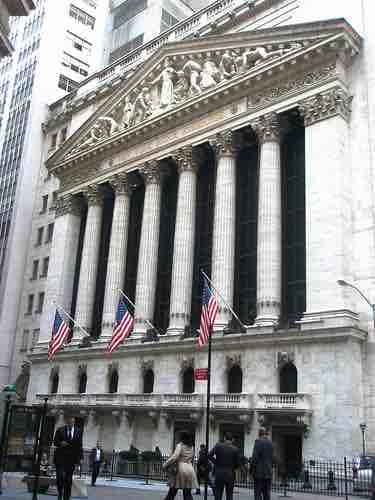Financing Activities
One of the three main components of the cash flow statement is cash flow from financing. In this context, financing concerns the borrowing, repaying, or raising of money. This could be from the issuance of shares , buying back shares, paying dividends, or borrowing cash. Financing activities can be seen in changes in non-current liabilities and in changes in equity in the change-in-equity statement.

NYSE
The cash from issuing stocks in a market such as the New York Stock Exchange is positive financing cash flow.
On the liability side, a company may take out a loan. Everything concerning the loan is a financing activity. Receiving the money is a positive cash flow because cash is flowing into the company, while each individual payment is a negative cash flow.
However, when a company makes a loan (by extending credit to a customer, for example), it is not partaking in a financing activity. Extending credit is an investing activity, so all cash flows related to that loan fall under cash flows from investing activities, not financing activities.
As is the case with operating and investing activities, not all financing activities impact the cash flow statement -- only those that involve the exchange of cash do. For example, a company may issue a discount which is a financing expense. However, because no cash changes hands, the discount does not appear on the cash flow statement.
Overall, positive cash flow could mean a company has just raised cash via a stock issuance or the company borrowed money to pay its obligations, therefore avoiding late payments or even bankruptcy. Regardless, the cash flow statement is an important part of analyzing a company's financial health, but is not the whole story.